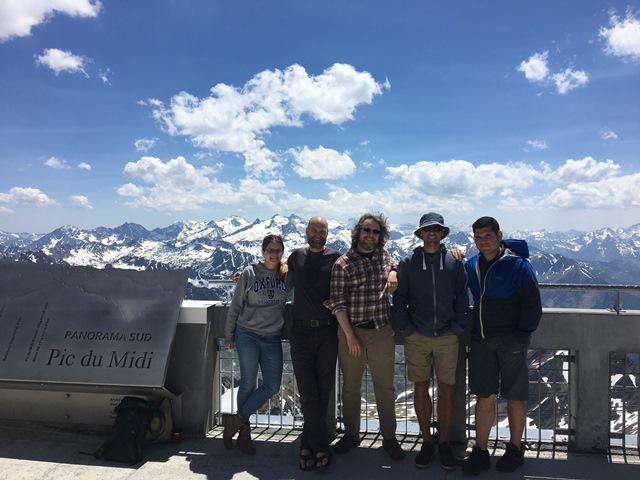La dernière expérience (The last experiment)
It was my absolute pleasure to work with an amazing team
this past month to conduct one last experiment for Project PODARCIS. Fabien returned
from Australia, Antonio came back down from Germany for a couple weeks, and we
added two new members to Team PODARCIS: Essie Rodgers and Rory Telemeco. Last
summer at the meeting of the Society for Experimental Biology, I met Essie. I
knew of her great work examining how temperature and other factors influenced
the dive times of crocodiles (for example, see here, here, and here). We had an interesting but brief conversation and –
since she was currently a post-doc not too far away in Belgium – hoped that we
could get together for a collaboration. We kept and touch and made it happen
for this experiment. And of course, my good friend and long-time collaborator
Rory Telemeco received support as a TULIP Visiting Scientist to spend a month
here working on this project. We had some ambitious plans in a limited period
of time, but I knew this could be just the group to pull it off.
 |
| The crew for the last PODARCIS experiment -- team TOPS (from left to right: Essie Rodgers, Eric Gangloff, Rory Telemeco, Fabien Aubret, Antonio Cordero). |
Rory and I have been holding weekly video meetings for the past year to plan this experiment, a test of the Hierarchical Mechanisms of Thermal Limits hypothesis we proposed in our paper from last year. We started in immediately after Rory’s arrival. After a few fits and starts in the first week to figure out our procedures and sort out the equipment, we landed on a protocol that would allow us to measure resting and active metabolic rates in lizards across seven temperatures – so that we can then estimate thermal performance curves for each individual. We did this with lizards at low elevation and, of course, at the Pic du Midi to test the effects of hypoxia. We also measured lizard sprint speed at each of the temperatures, which we know is largely anaerobically fueled but our previous work has shown is affected by high-elevation hypoxia.
 |
| Our set-up at the little lab at Pic du Midi: three respirometry systems, four laptops, and one lizard racetrack (not shown). |
 |
| Essie switches from baseline to measurement chambers with our home-made respirometry flow system. |
 |
| The crew loads up a cart with all our gear for the cable car ride up to the Pic. |
In the end, we measured 12 lizards at low elevation and 9 at high elevation, which will allow us to test whether the thermal performance curves are affected by hypoxia as we might expect:
We dubbed this project TOPS – Temperature-Oxygen Performance Surfaces (and also because the
ecological context is to see whether lizards can colonize habitat on the tops
of mountains, tee-hee. Also, the team was tops. So a triple entendre!). Look for more of our results soon.
 |
| Giving the thumbs up after successfully re-capturing an escaped lizard. |
It was one of the most intense experiments I’ve ever
conducted – and fun! During this time, Fabien managed to take some amazing
video footage with his drone and combine this with videos from the lab to
produce a short-but-incredible highlight reel of the past couple weeks. See it
here:
A huge thank-you to this amazing team: Fabien, Essie,
Antonio, and Rory. And of course many thanks to Becky and Melissa for minding the kids while Rory and I spent three intense weeks in the lab.
And with that…Project PODARCIS comes to a close…at least my
official post-doc post comes to a close. Of course, there are more papers to
write, more updates to share, and it’s
looking very likely that we’ll be continuing our work with Podarcis – and maybe even high-elevation specialists lizards like Iberolacerta – in the coming years! As
they say in France, on croise les doigts.



Comments
Post a Comment